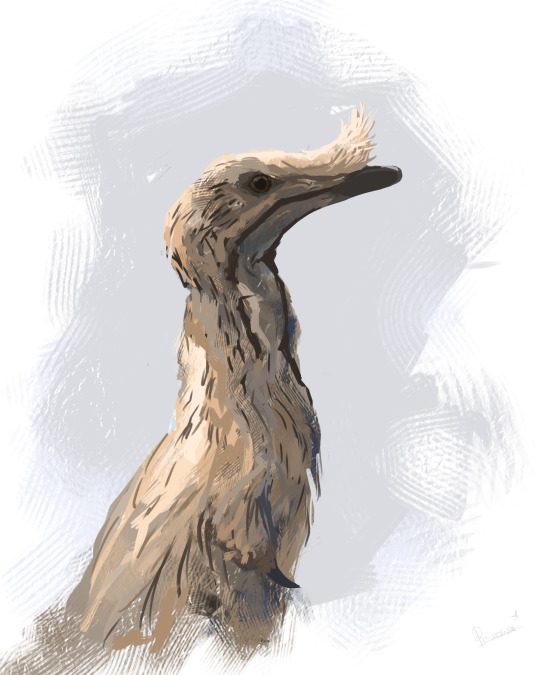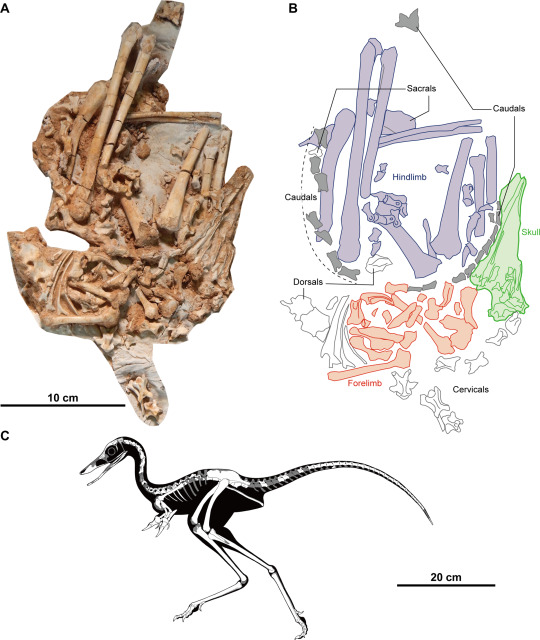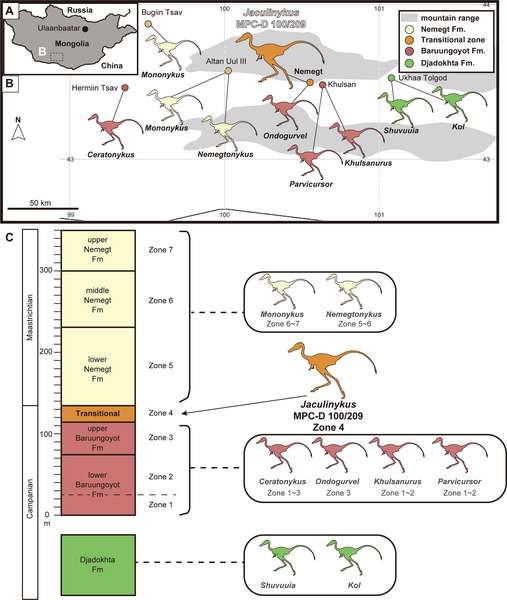#Jaculinykus yaruui
Text

Been slacking on art so have this Jaculinykus yaruui, an Alvarezsaur from the Barun Goyot FM
99 notes
·
View notes
Text










1. Alcidedorbignya
2. Gigantspinosaurus sichuanensis
3. Jaculinykus yaruui
4. Kaprosuchus saharicus
5. Limnosculus
6. Sarus crane
7. Dokkaebi
8. Elasmotherium
9-10. Compsognathus longipes.
#alcidedorbignya#dokkaebi#elasmotherium#compsognathus#ognimdo2002#earth responsibly#rapunzles tangled adventure#sarus crane#limnosculus#Jaculinykus yaruui#Jaculinykus#gigantspinosaurus#gigantspinosaurus sichuanensis#kaprosuchus saharicus#ibispaint art#earthresponsibly
16 notes
·
View notes
Text
A team of paleontologists and biologists from Hokkaido University, Hokkaido University Museum, North Carolina State University and the Mongolian Academy of Sciences, has uncovered a previously unknown species of dinosaur that appears to have slept in the same position as modern birds.
In their paper published in the open-access journal PLOS ONE, the group describes where the fossil was found, its condition, and the unique position in which the specimen had folded itself before dying.
Until recently, members of the Alvarezsauridae family, a group of small therapods (carnivorous bipedal dinosaurs), were believed to be a kind of flightless bird—now, they are classified as Maniraptoran dinosaurs, a type that is non-avian but is still related to modern birds. In this new study, the researchers found a new species of Alvarezsauridae they have named Jaculinykus yaruui. It translates to "speedy, tiny dragon" and has a lineage with a group that had several bird-like features.
The fossil was found at a dig site in Mongolia's Gobi Desert called the Barun Goyot Formation, embedded in rock in a place called Nemegt. The site has yielded a number of dinosaur fossils over the past several years. The newly found fossil has been dated to approximately 71 million years ago. The team describes it as being in very good condition—it is a nearly complete, 3D preserved fossil.
Continue Reading.
528 notes
·
View notes
Text
Jaculinykus yaruui Kubo et al., 2023 (new genus and species)

(Type specimen and schematic skeletal of Jaculinykus yaruui, with preserved bones in white on the skeletal, from Kubo et al., 2023)
Meaning of name: Jaculinykus = jaculus [small dragon in Greek mythology] claw [in Greek]; yaruui = speedy [in Mongolian]
Age: Late Cretaceous (Campanian–Maastrichtian?)
Where found: Barun Goyot Formation, Ömnögovi, Mongolia
How much is known: Nearly complete skeleton of one individual.
Notes: Jaculinykus was an alvarezsaurid, a group of unusual small theropods with short but powerful forelimbs, each tipped with an enlarged thumb claw. Their other fingers were highly reduced, and in at least one case (Linhenykus), probably lost entirely. Jaculinykus appears to exhibit an intermediate stage in finger loss, having lost one of the smaller fingers on each hand. This makes it the first known example of an alvarezsaurid with two-fingered hands.
Jaculinykus is also one of the most completely known alvarezsaurids. Most of the bones in the type specimen have probably remained close to the original positions that they were held in when the dinosaur died, and they suggest that Jaculinykus slept in a very bird-like posture with the head turned back and tucked close to the body. A similar sleeping pose had previously been found in the troodontid theropods Sinornithoides and Mei, but Jaculinykus provides the first strong evidence that alvarezsaurids (which were more distant relatives of modern birds than troodontids) adopted the same behavior.
Reference: Kubo, K., Y. Kobayashi, T. Chinzorig, and K. Tsogtbaatar. 2023. A new alvarezsaurid dinosaur (Theropoda, Alvarezsauria) from the Upper Cretaceous Baruungoyot Formation of Mongolia provides insights for bird-like sleeping behavior in non-avian dinosaurs. PLoS ONE 18: e0293801. doi: 10.1371/journal.pone.0293801
366 notes
·
View notes
Text
A new alvarezsaurid dinosaur (Theropoda, Alvarezsauria) from the Upper Cretaceous Baruungoyot Formation of Mongolia provides insights for bird-like sleeping behavior in non-avian dinosaurs
Published 15th November 2023
A newly described derived alvarezsaur, Jaculinykus yaruui, from the Late Cretaceous of Mongolia represented by a nearly complete and articulated skeleton with the preserved posture of a stereotypical avian-like sleeping position suggesting that the sleeping postures are a maniraptoran synapomorphy.

Geographic and stratigraphic occurrence of the Mongolian alvarezsaurids and Jaculinykus yaruui

Holotype of Jaculinykus yaruui and skeletal reconstruction

Evolution of avian-like sleeping posture in theropod dinosaurs, Skeletal disposition of Jaculinykus yaruui and life reconstruction
Source:
4 notes
·
View notes
Text
I dinosauri simili agli uccelli dormivano come gli uccelli moderni, lo rivela un nuovo fossile
Postura di Jaculinykus yaruui durante il sonno.
I paleontologi della Mongolia hanno portato alla luce uno scheletro quasi completo e articolato di un genere e di una specie finora sconosciuti di dinosauro alvarezsauride vissuto più di 72 milioni di anni fa. In particolare, la postura conservata di questo esemplare mostrava una posizione stereotipata di sonno simile a quella degli uccelli.
Il…

View On WordPress
0 notes